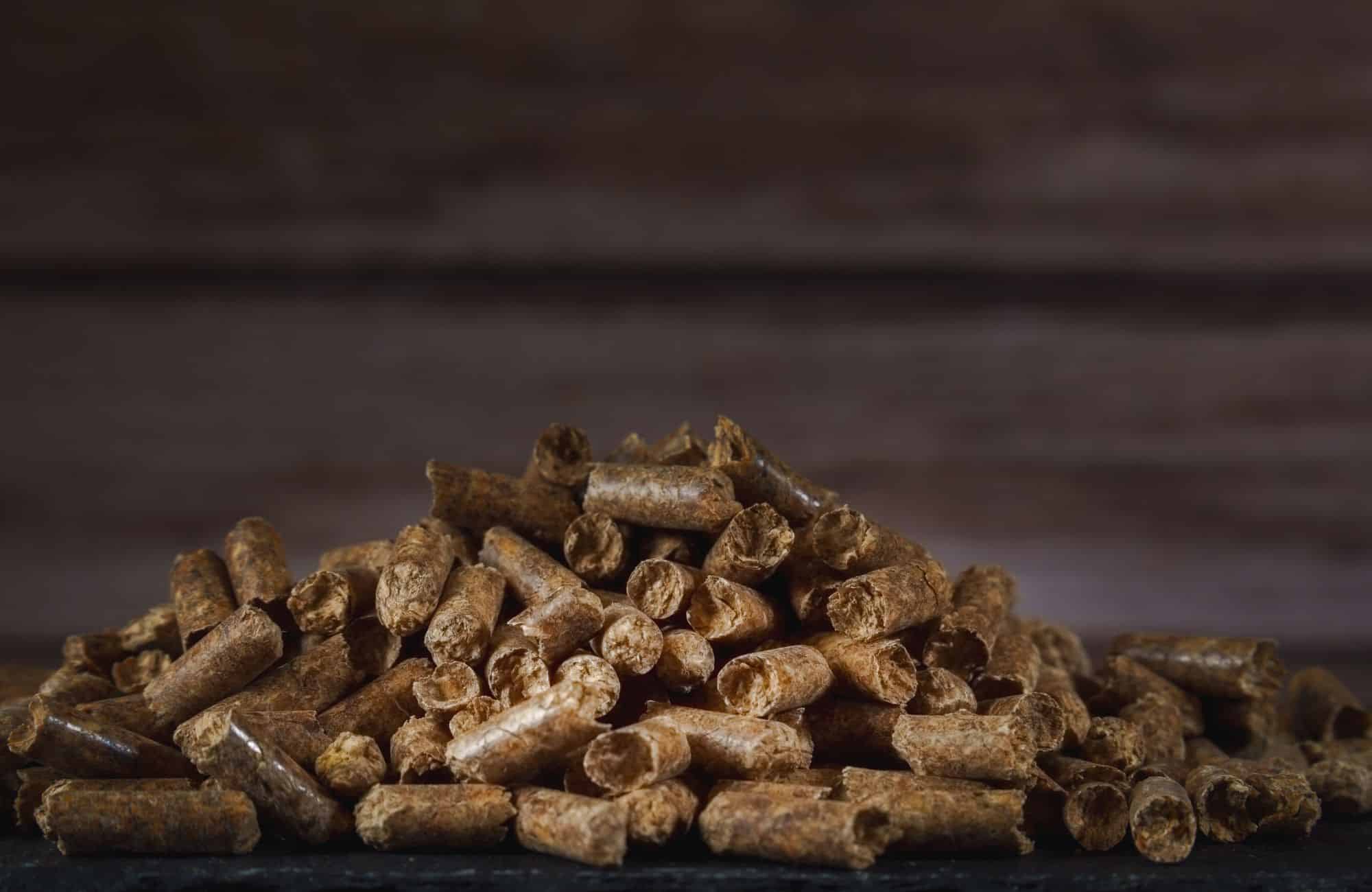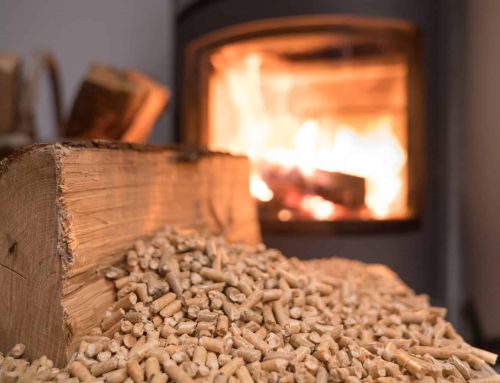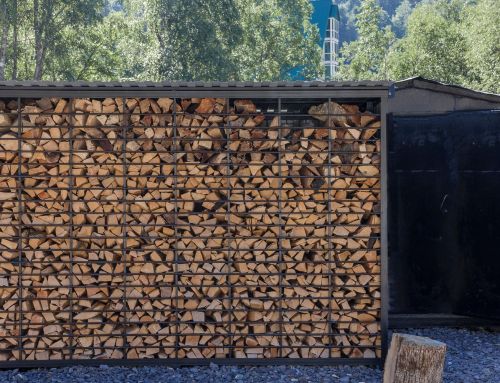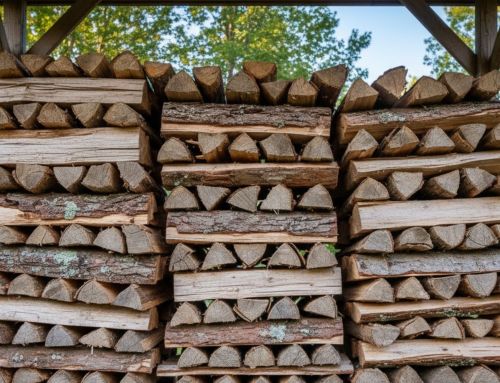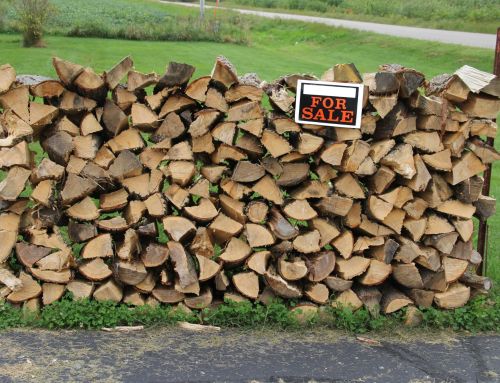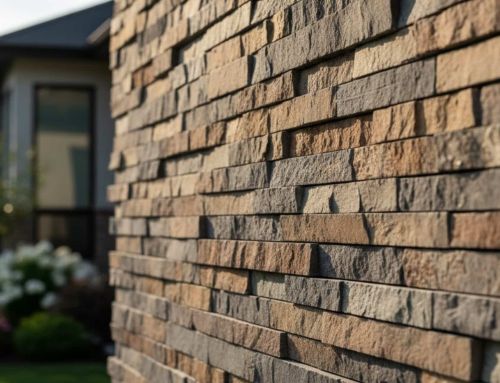Wood fuel pellets have become one of the most effective, economical, and natural heat sources for homeowners. Many people choose pellets because they offer an all-natural, efficient way to heat your home without the high costs of oil or propane. They burn clean, they’re made from recycled wood, and the price of this fuel is remarkably stable compared to fossil alternatives.
About a million U.S. households use wood pellets for heating each year. As more people look for both cost savings and renewable resources, pellet fuel stands out as a clean-burning home heating alternative that delivers strong performance. If you’re exploring pellet heat for the first time or looking to upgrade your current setup, working with a trusted supplier like Old Station Outdoor & Landscape Supply ensures you get high-quality pellets that burn efficiently and reliably. Understanding pellet quality, cost, and proper storage will help you get the most from your investment.
What Are Wood Fuel Pellets?
Wood fuel pellets are small, dense cylinders made from compressed sawdust and wood residues. They are considered a biomass product because they use organic matter that would otherwise be thrown away or left unused. When compressed into uniform shapes, pellets burn hotter, cleaner, and more consistently than traditional firewood.
Their low moisture and high density make them a cost-efficient fuel source that produces strong heat output with minimal waste. Because pellets are made from recycled wood, they help convert millions of tons of potential landfill waste into energy each year. They are an environmental solution that balances affordability and performance. This makes them a strong choice for homeowners who want predictable heating costs.
How Wood Fuel Pellets Are Manufactured
The manufacturing process plays a major role in determining pellet quality. Production begins with sawdust, wood shavings, or trimmed forest residues. These materials are collected, screened, and dried to reduce moisture. Drying is one of the most essential steps because wood pellets burn best when moisture levels stay low.
Once dried, the material is ground into a fine fiber and compressed under high pressure through a die. This pressure naturally heats the wood, causing lignin (a natural polymer in wood) to bind the pellets together. No chemicals or glues are used. After shaping, pellets are cooled, screened, and packed into bags or bulk containers. This process creates pellets with even density, consistent burn performance, and predictable heat output. When you choose high-quality pellets, you benefit from better BTU output, cleaner burns, and longer heating cycles.
Types of Wood Fuel Pellets: Hardwood vs Softwood
Homeowners often debate whether hardwood pellets or softwood pellets are better. Both types have the same density, meaning the actual hardness of the wood does not determine efficiency. What matters more is how the pellet is produced. Here are the main differences:
Hardwood Pellets
- Slightly lower BTU output compared to softwood
- Often marketed as “premium hardwood”
- Produces predictable heat with steady burn rates
Softwood Pellets
- Typically burn longer and burn hotter
- Lower ash content due to natural composition
- Ideal for homeowners wanting maximum heat per bag
In most cases, premium hardwood and ultra-premium softwood pellets both deliver excellent performance. They perform best when they meet strict grading standards.
Key Factors That Determine Pellet Quality
No matter which type you prefer, quality should always guide your decision. Higher-quality pellets produce more heat, leave behind less ash, and reduce wear on your stove. Below are the most important quality indicators.
Moisture Content
Pellets burn best when they have low moisture. When moisture levels rise, pellets produce more smoke, less heat, and inconsistent flames. Look for pellets with moisture levels under 8 percent for the best performance.
Ash Content
Low ash content means easier cleaning and less buildup inside your stove. Premium pellets typically have ash levels under 1 percent, leading to fewer clinkers and longer stove life.
BTU Output
BTU is the measure of heat energy. Higher BTU means better heating efficiency. Premium pellets offer a better BTU output for your money because they burn hotter for longer periods without wasting fuel.
Durability and Hardness
Pellets should remain intact during transport. Crumbling pellets or excessive dust reduce efficiency and can clog your stove’s feeding system.
Certifications & Standards
This is one area where most competitors lack depth, yet it plays a major role in pellet selection.
Look for:
- PFI Graded Premium Fuel
- ENplus Certification
- Certified high-quality bagged fuel pellets labels
These certifications ensure the pellets meet strict standards for ash, moisture, hardness, and size. Certified fuel also protects your stove warranty and guarantees cleaner burn performance.
Cost of Wood Fuel Pellets: What Homeowners Should Expect
Pellet prices vary by region, but they remain remarkably stable compared to propane, oil, and natural gas. Wood fuel pellets are considered a significant cost-saving fuel because they offer predictable seasonal pricing. A typical homeowner uses 2 to 3 tons of pellets each winter, and one ton, roughly 50 bags, provides the energy equivalent of about 120 gallons of heating oil. This makes pellet fuel a budget-friendly heating option for many families, especially when sourced from a reliable supplier like Old Station Outdoor & Landscape Supply.
Premium pellets may cost slightly more, but they burn cleaner, last longer, and reduce maintenance costs over time. High-quality pellets often deliver more heat per dollar throughout a full season. They help homeowners enjoy consistent and efficient warmth. They also reduce the chance of stove problems.
Wood Fuel Pellets vs Other Heating Fuels
Pellets offer advantages that are difficult to match with other heating options. Heating oil and propane fluctuate dramatically in price. This makes it difficult for homeowners to plan their expenses. Natural gas is cleaner but not always available in rural areas. Firewood is affordable but inconsistent in moisture and heat output.
Pellets bridge these gaps with stable pricing, predictable performance, and low particulate emissions due to their high burn efficiency. Below is a simple comparison to help illustrate the difference:
| Fuel Type | Heat Output (BTU) | Price Stability | Clean Burning | Convenience |
|---|---|---|---|---|
| Wood Pellets | High | Very Stable | Very Clean | Easy Storage |
| Firewood | Variable | Stable | Moderate | Bulky, inconsistent |
| Heating Oil | Very High | Unstable | Clean | Requires delivery |
| Propane | High | Highly Unstable | Clean | Requires tank |
This balance of performance and cost makes pellets a strong choice for homeowners seeking a clean, renewable heating solution.
Best Uses for Wood Fuel Pellets
Wood fuel pellets are versatile and can be used across many heating systems. Most homeowners rely on pellet stoves for primary or supplemental heat. Pellet boilers are ideal for whole-home heating, while commercial buildings use bulk systems for cost efficiency. In addition to heating, pellets are also used for cooking and grilling. Heating pellets and cooking pellets are not always the same, but the concept of uniform burn performance applies to both. The consistent heat output makes them popular for outdoor cooks who want predictable temperatures. Pellets can also be used in barns, workshops, detached garages, and commercial spaces that need reliable, consistent heat.
How to Choose the Right Wood Fuel Pellets
Choosing the best pellets starts with understanding what quality looks like. Not all pellets burn the same, and the wrong type can reduce heat output and increase stove maintenance. Before purchasing, look for pellets with quality marks on the bag, including PFI Graded Premium Fuel or comparable European standards.
Read the BTU rating and ash content on the label. Lower ash and higher BTU usually mean a better-performing pellet. Decide between hardwood or softwood based on your climate, heating goals, and stove preferences. Softwood pellets generally produce hotter burns, while hardwood pellets offer steady heat with familiar performance. If you buy in bulk, make sure your storage area is dry and ventilated. Always inspect the pellets before buying. Pellets should be firm, consistent in color, and free from crumbling or excessive dust.
How to Store Wood Fuel Pellets Properly
Storage plays a major role in maintaining pellet quality. Pellets absorb moisture easily, and once they do, they lose density and become unusable. Proper storage keeps your investment safe and ensures you get maximum heat when you need it.
A dry, clean, and well-ventilated area is the best place to store pellets. Keep bags elevated off the floor to avoid contact with damp surfaces. Even concrete floors can pull moisture into the bags. If you must store pellets outside, cover them fully and ensure airflow to prevent condensation. A humidity-controlled environment is ideal, especially in humid climates where moisture levels rise quickly.
Environmental Impact: Are Wood Fuel Pellets Sustainable?
Wood pellets are often marketed as an environmental solution, and in many ways, that’s true. They use recycled wood and other renewable resources, and they burn cleaner than many fossil fuels. Pellets also help reduce landfill waste by converting organic by-products into usable energy.
Still, sustainability depends on responsible manufacturing. Pellets made from properly managed forests or true wood waste offer strong environmental benefits. Transportation, sourcing, and processing all play a role in the carbon footprint, so certified producers generally offer better transparency and trustworthy practices.
Conclusion
Wood fuel pellets offer an affordable, reliable, and environmentally conscious way to heat your home. They provide stable pricing, strong heat output, and low emissions while using renewable resources. With the right understanding of pellet quality, storage, and stove maintenance, you can enjoy steady, comfortable heat all winter without the high costs of traditional fuel.
At Old Station Outdoor & Landscape Supply, we provide certified, high-quality pellets that deliver better performance, higher BTU output, and fewer maintenance issues. Whether you’re switching from another fuel or upgrading your current setup, our team can help you choose the right pellets for your home and heating system. Contact us today to get expert guidance and dependable pellet products for the season.
FAQs
Where to buy wood pellet fuel?
Where to buy wood pellet fuel depends on your location, but most homeowners purchase it from local landscape supply stores, home improvement centers, or trusted pellet distributors. Buying locally ensures you get fresh, dry pellets that haven’t been damaged in transit. It also allows you to get guidance on the best pellet type for your home and climate.
How to make wood pellet fuel?
It involves collecting clean wood waste, drying it to low moisture levels, grinding it into fine fibers, and compressing it under high pressure through a pellet mill. The heat from compression activates the wood’s natural lignin, which binds the pellets without additives. This process requires commercial equipment, so most homeowners buy pellets rather than make them.
What is wood pellet fuel?
It is a biomass heating product made from compressed sawdust and recycled wood materials. These pellets burn cleanly, produce strong heat output, and offer a consistent, low-maintenance alternative to traditional firewood or fossil fuels.
Are wood pellets a green fuel?
Yes, when sourced responsibly, they are considered a greener alternative because they use recycled wood and renewable resources. They also burn efficiently, producing lower emissions compared to oil, propane, and untreated firewood.

